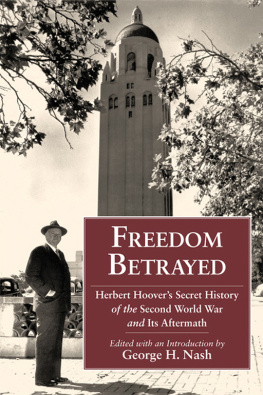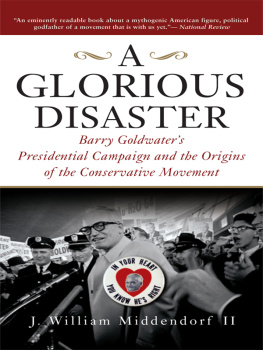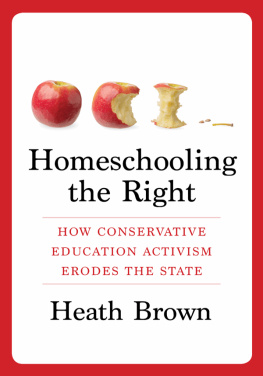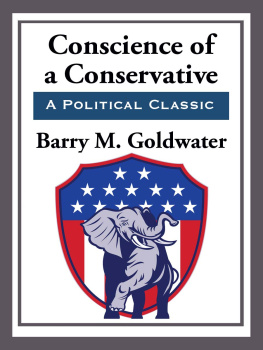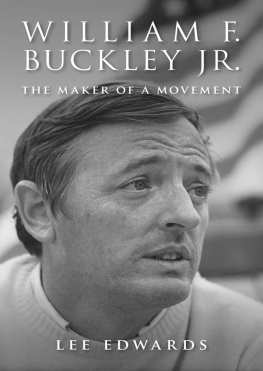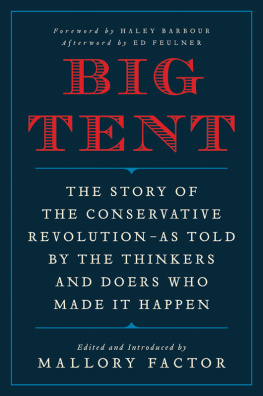All rights reserved, including without limitation the right to reproduce this ebook or any portion thereof in any form or by any means, whether electronic or mechanical, now known or hereinafter invented, without the express written permission of the publisher.
Chapter 1. Originally published in Wendell Berry, ed. Paul Merchant (Lewiston, ID: Confluence Press, 1991). Reprinted by permission.
Every effort has been made to obtain permission for the use of copyrighted material in this book.
Copyright 1976, 1996, 2006 by George H. Nash
Preface to the Thirtieth-Anniversary Edition
Three decades have now elapsed since the book before you was published in its original form. In the lives of men and women, as well as the cycles of book publishing, such a period of time can constitute an epoch.
So it has been for the subject of the pages that follow. When The Conservative Intellectual Movement in America Since 1945 was first published, Ronald Reagan was a former governor of California with no apparent political future, and George W. Bush a young oilman in Texas. Journals like First Things, the New Criterion, and the Weekly Standard did not exist. While intelligent conservatism was clearly on the upswing in the 1970s, it was still a minority phenomenon, especially in the academic community. Abroad, Lech Walesa was an unknown Polish electrician, Vaclav Havel a persecuted Czech playwright, and Margaret Thatcher the new leader of a British Conservative Party that was out of power. The pontificate of Pope John Paul II had not yet begun, and the Berlin Wall stood firm. The Cold War was very much a reality.
And yet, as I reread these pages, mostly written in graduate school, I am struck by how contemporary their subject stillseems. Despite the corrosive passage of time and the ephemerality of so much public discourse, the conservative intellectual movement chronicled in this book has not faded into quaint irrelevance. It has not become history. To the contrary, it has made history and it is still making historyto the point that, for adherents and detractors alike, it is more relevant to our nation's life than ever before.
For this reason alone, it seems fitting that my book remain accessible to readers in a new edition, reflecting the developments of recent years, There is another reason as well: since the early 1990s, and especially since 2001, the conservative movement has entered a period of introspection and fractiousness not seen, in such acute form, since the early 1960s. Gladdened by political victories, yet disappointed with their fruits, many on the Right are seeking to reorient and even redefine the conservative mission in a post-Cold War, post-9/11 world. In such confusing circumstances, it is usually helpful to remember who we are or have come to be. As thoughtful conservatives feel impelled to reexamine their first principles, perhaps this study of modern American conservatism's intellectual history will provide some edifying perspective.
The only thing that's new in the world is the history you don't know, Winston Churchill once remarked. It is my hope that students of all persuasions, especially students who call themselves conservatives, will find in this book some history that they don't know but will want to know, if they would truly understand the national debates raging around them.
For this thirtieth-anniversary edition, I have essentially let stand the portions of the book first published in 1976. What I called the Epilogue in the second edition (published in 1996) has become, with a few modifications, Chapter 12 here. The Bibliographical Postscript of 1996 has been revised and expanded to encompass the surge in scholarship about conservatism inthe past decade. My Conclusion (Whither Conservatism?) is new. It has been drawn, in part, from an essay that will appear in Charles W Dunn, ed., The Future of American Conservatism (ISI Books, 2007).
Many people have influenced and facilitated the preparation of this volume in its successive versions. In my Acknowledgments pages I cite those individuals who contributed to the process of study and reflection that culminated in the first edition. In this Preface it is a pleasure to mention those who made a secondand now thirdedition possible. For initiating the reprint project that eventuated in the second edition a decade ago, I am grateful to Jeffrey O. Nelson of the Intercollegiate Studies Institute (ISI). To Mr. Nelson and his former assistant Brooke Daley (now Brooke Haas), I repeat my earlier thanks for skillfully shepherding this book to publication. In this task I benefited from the able and conscientious proofreading assistance of Andrea Gralenski, Catherine Lulves Hancock, Michael Hancock, Mary Slayton, Jean Nash, and G. Harlan Nash. I remain grateful to them all.
It was Jeremy Beer, the editor in chief at ISI Books, who gave me the welcome news of ISI's intention to bring out a thirtieth-anniversary edition. It has been a pleasure to work with him, Jennifer Connolly, and their colleagues on this endeavor. For proofreading and copyediting assistance this time around, I thank Jennifer Connolly, Emma Kuipers, and Nancy Nash. For preparation of the index I thank Megan Muncy. For providing a congenial environment in which I prepared this new edition (and much else in recent years) I am indebted to the dedicated librarians of Mount Holyoke College. For typing assistance and computer support cheerfully rendered on this and many other projects, I especially thank Emma Kuipers, who always came through with flying colors.
Finally, in the world of historical scholarship relatively fewpublications attain an active shelf life beyond their publishing season. If the book before you has been an exception, much of the credit must go to the good people at ISI Books. From the outset of our association, they have treated my volume as more than a product to be marketed. They have discerned both a need for the book, and an audience for it, among the rising generation of college and graduate students. No author could hope for a more enthusiastic publisher.
For prolonging the book's shelf life I also happily acknowledge my subject: the conservative intellectuals who, in defiance of criticism and even ostracism, pursued their callings, raised their banners, and refused to vanish into the so-called dustbin of history. No scholar could have a more cooperative group to study: thirty years later, they and their intellectual heirs are still shaping the American conversation. Because they have persevered, so, too, must those who would undertake to explain them. Hence the book which is now in your hands.
South Hadley, Massachusetts
June 29, 2006
Acknowledgments
Probably every historian who engages in scholarly research soon becomes aware of the dual nature of his craft. On the one hand, his work is usually solitary; on the other, it is supported by, and even dependent upon, the contributions of those who make him aware of the larger community to which his work is eventually addressed. As this project now passes from the scholar's study into public view, it is with deep satisfaction that I contemplate the many people who at one stage or another contributed, directly or indirectly, to my undertaking. With particular pleasure I thank Donald Fleming of Harvard University for his unfailing encouragement, scholarly example, and wise counsel. To Frank Freidel of Harvard I express my appreciation for his helpful advice and continuing interest as my work developed. I am pleased to thank Bernard Bailyn, Oscar Handlin, and my other professors at Harvard for their roles in the process of professional training which has culminated in this volume.


